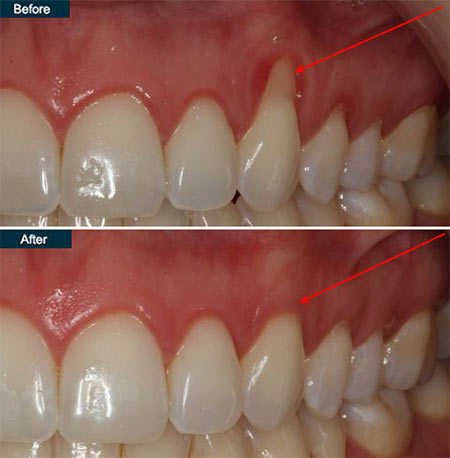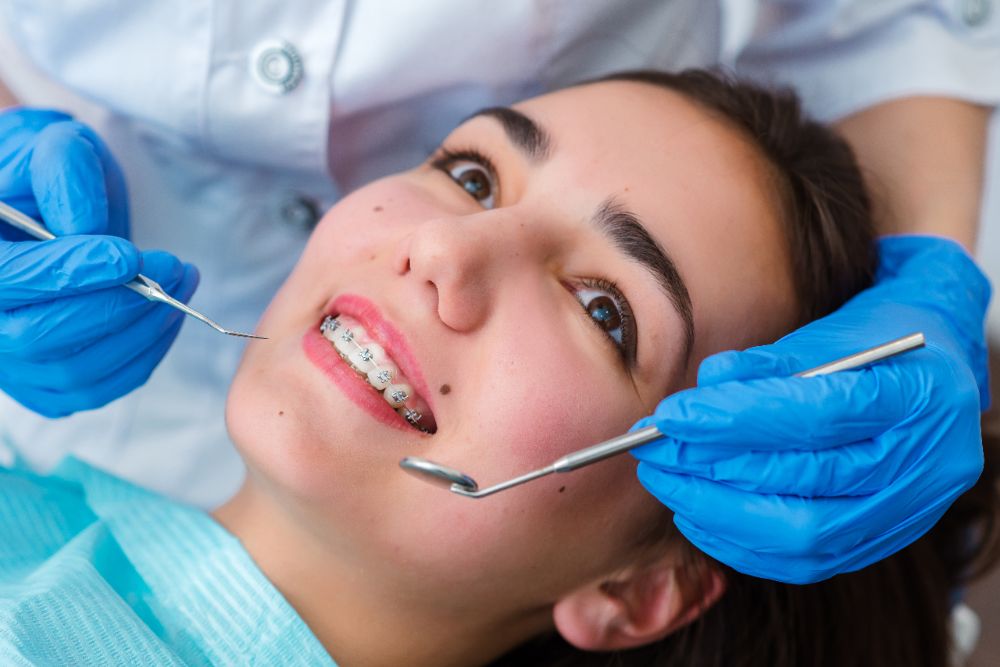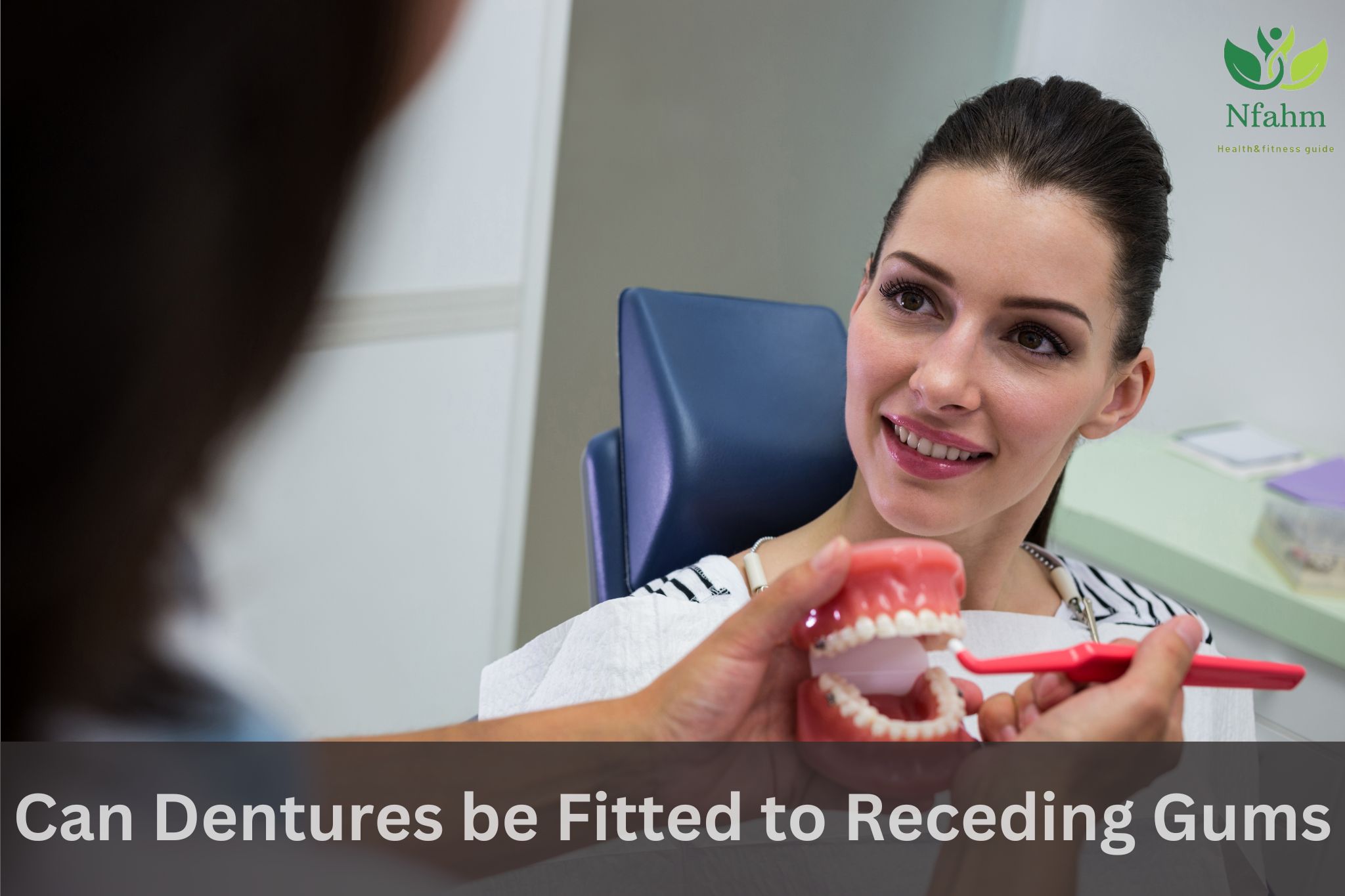Gum recession is a common dental problem that occurs when the margin of the gum tissue surrounding the teeth wears away, or pulls back, exposing more of the tooth or the tooth’s root.
This can lead to serious dental concerns, including tooth loss, if not addressed properly.
One frequently asked question is whether individuals experiencing gum recession can still be candidates for dentures.
This document aims to explore the various aspects of fitting dentures to receding gums, considering the challenges, solutions, and what patients can expect during the process.
Causes of Receding Gums
Gum recession can arise from a variety of causes, both preventable and inevitable. Poor oral hygiene tops the list as the most common cause, as it can lead to periodontal disease, inflammation, and infection of the gums, which, in turn, leads to gum recession.
Overly aggressive brushing or using a hard-bristled toothbrush can also contribute to receding gums by wearing down the tissue disposed to gum disease regardless of their oral care routine.
- Other contributing factors include tobacco use,
- Hormonal changes, especially in women, which make gums more sensitive and susceptible to recession
- Improper dental care
- Failing to get regular dental checkups
- Cleanings.
Additionally, grinding or clenching teeth can put undue pressure on the teeth, leading to gum recession.
Understanding these causes is critical in addressing gum recession and considering the suitability of dentures for affected patients.
The Impact of Receding Gums on Dentures
Gum recession poses specific challenges for the fitting and comfortable use of dentures.
Essentially, when the gum line recedes, it changes the landscape of the mouth, affecting how dentures sit and feel.
- This mismatch can lead to dentures that fit poorly
- Causing discomfort
- Irritation
- Even damage to the exposed root surfaces of the teeth.
Additionally, since dentures rely on a snug fit against the gums for stability, receding gums may compromise this stability and lead to slippage or difficulty in chewing and speaking.
Furthermore, the continued exposure of tooth roots due to gum recession can increase the risk of decay beneath the dentures, necessitating more frequent adjustments or replacements.
Therefore:
- it is paramount for dental professionals to carefully consider these factors and potentially adapt the denture design
- and fitting process for individuals with receding gums,
- ensuring they receive comfortable and functional prosthetics.
Solutions for Fitting Dentures to Receding Gums

Customized Denture Design
The key to successfully fitting dentures for individuals with receding gums lies in customized denture design.
Dental professionals can utilize advanced imaging techniques to accurately map the mouth’s contours,
Paying close attention to areas affected by gum recession.
This allows for the creation of dentures that are tailored not only to the shape of the mouth
But also to the specific challenges posed by receding gums.
Such personalized dentures ensure a better fit, reducing discomfort and enhancing overall functionality.
Soft Liners
For those with receding gums, soft liners can be a game-changer. These are made from a pliable material that is applied to the base of the dentures,
Acting as a cushion between the hard surface of the denture and the soft, possibly tender gum tissue.
Soft liners can absorb much of:
- The pressure exerted onto the gums during eating or speaking,
- Offering relief and preventing further irritation or damage to already sensitive areas.
Regular Adjustments and Check-Ups

Frequent check-ups and adjustments are even more crucial for denture wearers with receding gums.
As gum recession can progress over time, the fit of the dentures may change, requiring adjustments to maintain a snug and comfortable fit.
Regular dental visits also allow for the early detection and management of any potential problems, such as further gum recession or decay, ensuring the long-term health and comfort of the wearer.
Implant-Supported Dentures
For some patients experiencing gum recession, implant-supported dentures might be the most suitable option.
Instead of relying solely on the gum tissue for support, these dentures are anchored to the jawbone through dental implants.
This can provide a more stable base for the dentures, minimizing slippage and reducing pressure on the receding gums.
However, not all patients are candidates for implants, and a thorough evaluation by a dental professional is necessary to determine the best course of action.
Educating Patients on Proper Care
Lastly, educating patients on the proper care and maintenance of their dentures, as well as adopting good oral hygiene practices, is vital.
For individuals with receding gums, understanding how to clean their dentures and mouth correctly can prevent further gum recession and ensure the longevity and comfort of their dentures.
Regular consultations with dental health professionals can help patients receive the guidance they need for optimal denture care.
Prevention of Gum Recession
While treating gum recession is vital, especially for denture wearers, preventing it from occurring in the first place is equally important.
Good oral hygiene practices are at the forefront of prevention strategies, including regular brushing with a soft-bristled toothbrush, using fluoride toothpaste, and flossing daily to remove plaque and prevent periodontal disease.
It’s also advisable to avoid tobacco products and to limit sugary foods and drinks, which can contribute to gum disease.
Regular dental check-ups and cleanings play a significant role in spotting early signs of gum recession and addressing them before they escalate.
Addressing habits such as teeth grinding or clenching, which can put undue stress on the gums, may require the use of a mouth guard.
By incorporating these preventive measures, individuals can significantly reduce the risk of gum recession and improve their overall dental health.
Conclusion
The interplay between gum recession and the fitting of dentures presents a complex challenge that requires careful consideration and tailored approaches.
By understanding the impact of receding gums on denture stability and comfort, dental professionals can employ strategies like customized denture design, the use of soft liners, and the potential for implant-supported solutions to enhance patient outcomes.
Furthermore, emphasizing preventive care and regular dental visits plays a pivotal role in mitigating the effects of gum recession.
Ultimately, a patient-centered approach, focusing on individual needs and continuous care, is key to ensuring the long-term satisfaction and oral health of those wearing dentures amidst gum recession challenges.
FAQs
Are there alternatives to traditional dentures for those with severe gum recession?
Yes, for those with severe gum recession, alternatives such as implant-supported dentures might be more suitable. These dentures are anchored to the jawbone, offering a more stable and comfortable fit.
Can ill-fitting dentures accelerate gum recession?
Yes, dentures that do not fit properly can cause additional stress and irritation to the gums, potentially accelerating the process of gum recession.
How often should dentures be checked or adjusted for someone with receding gums?
Individuals with receding gums should have their dentures checked and possibly adjusted every 6-12 months, or more frequently if they experience discomfort or significant changes in fit.
Can receding gums grow back?
Receding gums cannot grow back on their own. Once the gum tissue has receded, it’s impossible for it to regenerate naturally.
However, there are dental treatments available such as grafting that can help restore the gum line.

